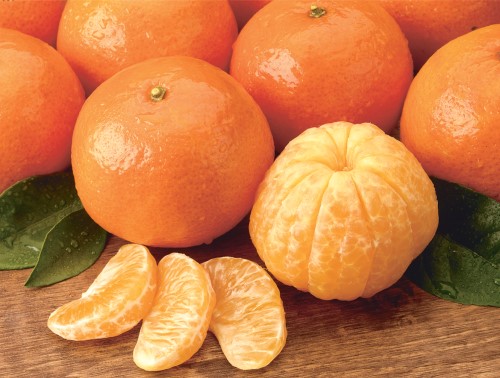
If anyone asked how much you knew about the tangerine, many would probably say that it’s a close relative of the orange. If you answered that way, you’re probably right. But there’s more to this delightfully deep-orange fruit than you know. Easy to peel, yummy to eat, with a bright colour that delights the senses, the Tangerine has much more magic in its history and great benefits for your health and body. Let’s find out.
A brief, juicy, history
Tangerine is a common name for a variety of mandarin orange, which is native to southeastern Asia. They are related varieties of oranges distinguished by loose, easily peeled skin (pericarp) and sweet juicy flesh “arils”. Wondering what the “aril” is? It’s those fleshy crescent-shaped segments that make up the tangerine. Just as oranges, the tangerine too belongs to the Rutaceae (citrus Family) and is known scientifically as Citrus reticulata.
A tangerine tree is smaller in size, unlike an orange tree, with slender branches and deep green leaves with pointed ends. The fruit is flat, and small in size, compared to “Navel” or “Valencia” oranges, and its loose, deep orange color skin can be peeled rather easily, making it an enjoyable quick snack. Inside, it features extensive fibrous pith which is loosely attached to its skin and edible flesh. An average sized fruit has 8-10 juicy segments (arils).
Most tangerines have a bright orange color, although some may be a deep orange-red color. They are distinctively smaller than oranges, with a taste often less sour, or tart, than that of an orange. While less tart, tangerines are considered to be sweeter than oranges.
Now to the health benefits—why tangerines are so good for your body
As in oranges, tangerines are very low in calories. However they are high in flavonoid anti-oxidants like narigenin, hesperetin, vitamin A, carotenes, xanthins and luteins; in fact many times higher than in oranges.
In addition, these citrus fruits are very rich sources of vitamin-C (ascorbic acid), a water soluble vitamin, folate and beta-carotene. Vitamin-C is one of powerful natural anti-oxidant which has many essential roles like collagen synthesis and wound healing, anti-viral, anti-cancer activity and helps prevent from neuro-degenerative diseases, arthritis, and cold/fever by removing oxidant free-radicals from the body. Vitamin C helps absorb iron in the food by reducing ferrous form of iron element to ferric form in the gut.
They also contain some potassium, magnesium and vitamins B1, B2 and B3. Tangerine oil, like all citrus oils, has limonene as its major constituent, but also alpha-pinene, myrcene, gamma-terpinene, citronellal, linalool, neral, neryl acetate, geranyl acetate, geraniol, thymol, and carvone.
Tangerines contain both vitamin C and fiber. The vitamin C in tangerines is essential for healthy teeth and gums. One tangerine can provide about 37 percent of vitamin C needed for the whole day.
Furthermore, they contain natural soluble and insoluble fiber like hemi-cellulose, pectin…etc which prevents cholesterol absorption in the gut. Adequate fiber in the food aids in smooth bowel movements by acting as laxative.
Too many high-sounding compounds and minerals? They really are good for you. The bottom line is that the Tangerine is a fruit-ball full of vitamins and mineral goodies for your health and body. It’s good for your skin, and found to be helpful in reduction in the risk for cancers, and many chronic diseases like arthritis, obesity and coronary heart diseases.

Serve up your tangerines nicely
Like oranges, tangerines can be eaten on their own without any additions.
Make some juice. Tangerine juice is a healthy refreshing drink. It is also used in sauces, marinades, concentrations…etc.
Sweeten a bowl of plain yoghurt with a few segments of the tangerine fruit.
Add its juicy segments to fruit/green salads.
Tangerine zest imparts special orange flavor to confectionary items such as biscuits, cakes, muffins, pastry cream, and ice-creams.
Load some tangerines in the fruit cabinet of your fridge, put a couple of them in a lunch pack for your kids to take to school, and for you to enjoy at work. Enjoy your tangerine, specially, today.


